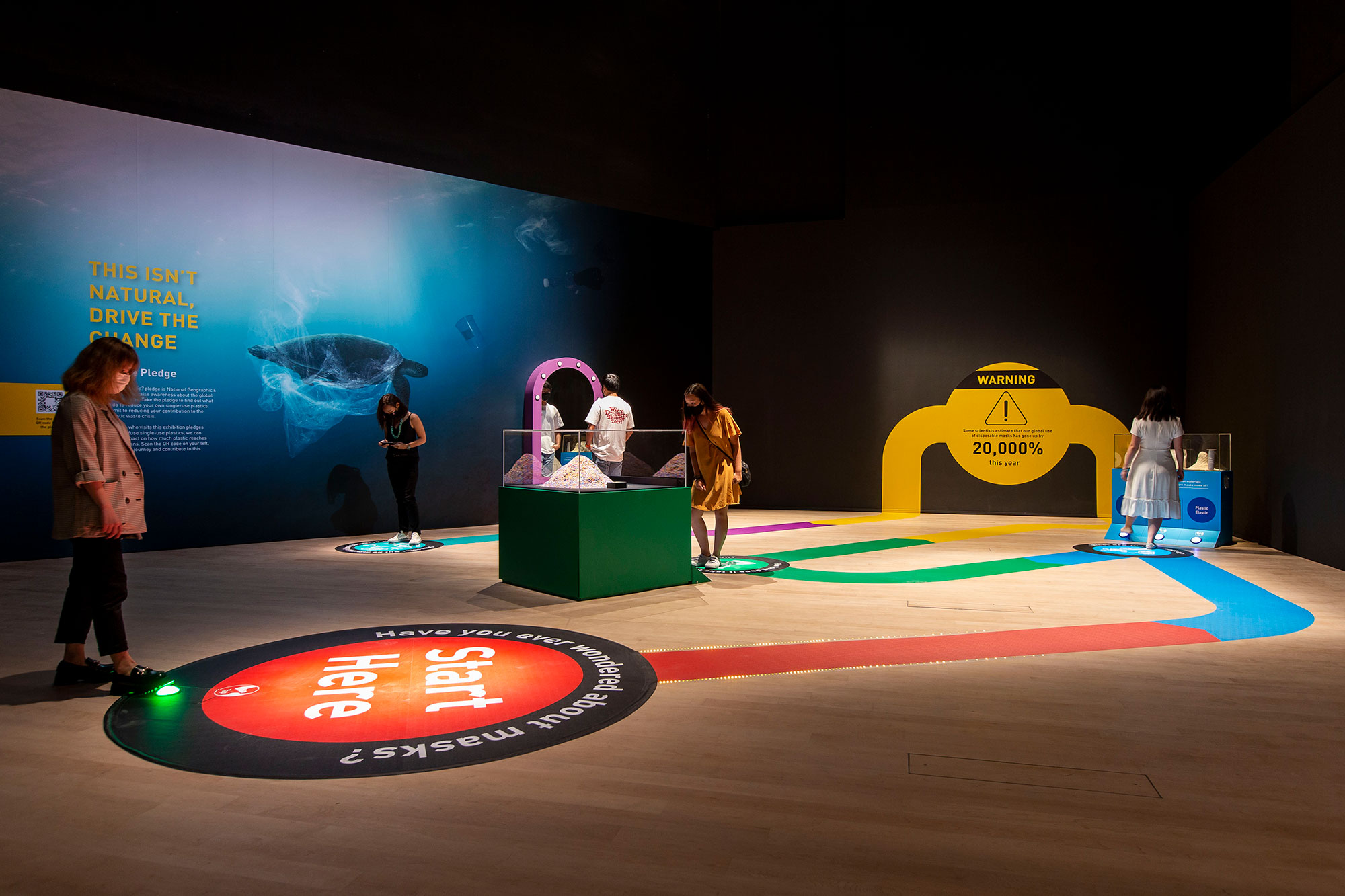A picture is worth a thousand words and National Geographic has shared many remarkable stories with the world through its striking photographs. Opened on 12 September at ArtScience Museum, Planet or Plastic?, an exhibition by National Geographic, tells the story of plastic, from its invention just over a century ago, to the environmental impact brought about by its mass consumption.
Featuring 70 profound images displayed in six thematic sections, the exhibition highlights the fragility of the natural environment, and how it is being impacted by plastic pollution. The show aims to raise awareness of society’s dependence on plastic by visually depicting the global plastic waste crisis and highlighting the people who are working on solutions to this urgent problem. The exhibition has a special focus on the devastating effect of plastic waste on the world’s oceans. The World Economic Forum has predicted that plastic in oceans could outweigh marine life by 2050.

To complement the powerful message presented in Planet or Plastic?, ArtScience Museum has developed a series of programmes, including workshops, film screenings, online events and community activities. One of the highlights is a beach clean-up, where members of the public will be invited to do their part for the environment by removing plastic waste from one of Singapore’s local beaches.
Feet-First Interaction
Within the galleries, ArtScience Museum has created an educational Interactive Space designed for visitors of all ages. The educational gallery encourages visitors to reflect on their consumption of plastic, including a special focus on how Covid-19 has increased our consumption of single-use plastic, creating new environmental challenges.

Interactive Space at Planet or Plastic?
The Interactive Space also responds to the challenges of Covid-19 by introducing a new method of interaction. Visitors activate the interactive stations within the gallery using their feet, rather than their hands.
“Our Interactive Space pioneers ArtScience Museum’s new ‘feet-first’ approach to tactile interaction within the gallery, offering visitors a new way of interacting with exhibits, without using their hands. Due to Covid-19, visitors have become more conscious of hands-on touching in public spaces, so we are experimenting with an alternative way of enabling engagement with our interactive displays,” added Harger.
Public Programmes
Further complementing the exhibition are a series of programmes that visitors can participate in from 12 September onwards. The highlight of the Public Programme for Planet or Plastic? is the beach clean-up activities on 5 December and 20 February 2021, organised with local environmental organisation, Seven Clean Seas.
Other programmes curated for the exhibition include ArtScience On Screen: Earth Watch, a series of film screenings between 12 September and 9 October that depict humanity’s troubling relationship with the planet. The online performance, You’re Safe Til 2024: Deep History on 17 September, creatively explores massive environmental changes taking place around the world.

The online conference, Climate Conversations on 6 October, illustrates how communities can work together to create a positive impact on the environment, inviting climate scientists and local ecologists to share stories from the frontlines of conservation.
Beyond these film screenings, performances and online talks, visitors can look forward to additional family activities and workshops which will be announced throughout the run of the exhibition.
For more information, visit https://www.marinabaysands.com/museum/exhibitions/planet-or-plastic.html









